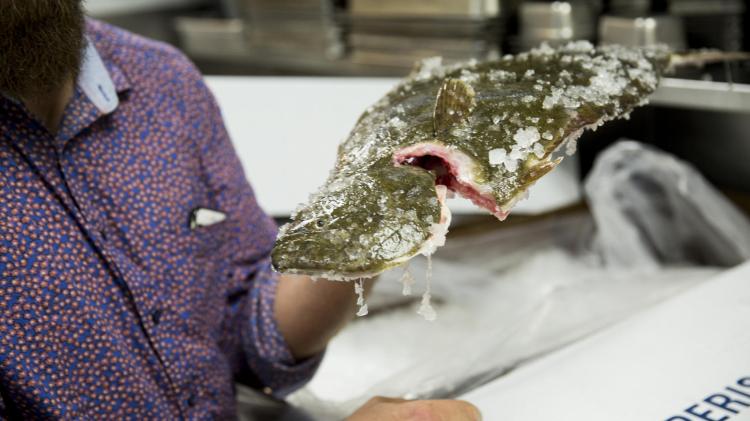Every Tuesday night for the last two months, chef Michael Cimarusti has been anxiously checking his phone for emails. He hasn’t been looking for sports scores; he’s been trying to figure out what he’d be serving the next night. Cimarusti has been playing an elevated version of that old Mystery Box game. The next night’s menu at his restaurant Providence — just named the best in Southern California for the third year in a row by Los Angeles Times restaurant critic Jonathan Gold — might have been based on pristine white sea bass or it might have been nothing but sea cucumbers.
It’s all part of an experiment in tightening the connection between fishermen and chefs called Dock to Dish, in which Providence pays a $750 a week subscription and is guaranteed at least 75 pounds of seafood every week caught by 16 small fishermen in the Santa Barbara, Calif., area. And then Cimarusti and his staff wait to see what the fishermen bring in.
“It definitely forces us out of our comfort zone,” says Cimarusti, whose seafood-based restaurant is regarded as one of the best in the country. “We get lots of things we might not ordinarily have ordered, and then we have to find out how to use them the best way.
“It’s an interesting process because it’s supply-based, not demand-based. We’re not calling in an order. They are going out foraging on the docks in Santa Barbara and finding what they can get that’s the cream of the catch to bring to us. Then it’s up to us to figure out what to do with it.”
One Wednesday morning in late October, the delivery consisted of 12 pounds of halibut, 10 pounds of whelks, 40 pounds of spiny lobster, 70 pounds of ridgeback shrimp and 17 pounds of lingcod. It is definitely a gamble, though. The next week that lobster bonanza was replaced by 50 pounds of fist-sized turban snails — which even 12 hours of simmering had only begun to tenderize. Still, Cimarusti says he has found a way to use everything he’s gotten.
“We purposely leave holes in our menu to accommodate whatever items we get,” he says. “But we usually don’t find out until about 10:30 or so the night before, so I probably check my emails like 20 times during service trying to find out what we are going to get.”
Dock to Dish was started on the East Coast by fisherman Sean Barrett and chef Dan Barber, and now 15 New York restaurants are members. It came west thanks to Sarah Rathbone, co-founder of Community Seafood, which sells the same kind of locally caught, small-boat fish and shellfish at farmers markets and through a home cook’s subscription program.
Its goal goes far beyond just playing Stump the Chef. That weekly subscription gives these small fishermen a solid economic basis from which to work. It offers a chance to give a little fine-dining exposure to what are often otherwise wallflower fish. And it connects restaurant kitchens even more closely with the sources of their ingredients.
In addition to each seafood delivery — and almost as important — is the email the night before, which not only explains what fish is coming in, but who caught it, where and how. So, for example, Cimarusti’s email that night told him that the halibut had been caught with a rod-and-reel by Morgan Castagnola aboard the Cecelia, and the whelks and lobsters had been caught in traps by Shane Robinson aboard the Miss Conception. It also detailed ocean conditions and some of the work that went into catching the fish.
“These great chefs, they can get whatever they want from anywhere in the world just by picking up the phone and placing an order,” Rathbone says. “That’s how industrialized seafood has always gone. Part of what we offer is an appreciation for the labor that went into catching and preparing the food. As far as our chefs are concerned, the more information the better. The story that comes with the fish is a really important part.”
At first, this year’s Southern California program was supposed to be just a one-month trial with Providence, but it was so successful it was extended, adding Niki Nakayama, who has earned high praise for her California-influenced kaiseki menus at her restaurant n/naka, including a starring role in an episode of the television series “Chef’s Table.”
Dock to Dish is on hiatus until April or May, when fishermen can get out on the water more reliably than during the stormy winter months.
“It’s really opened my eyes to just how wonderful some of these fish can be when they’re properly handled,” Cimarusti says. “I think before this model, a lot of the local fish wasn’t treated with the reverence it was due and it couldn’t command very high prices. This model is changing things.”
Send questions/comments to the editors.


